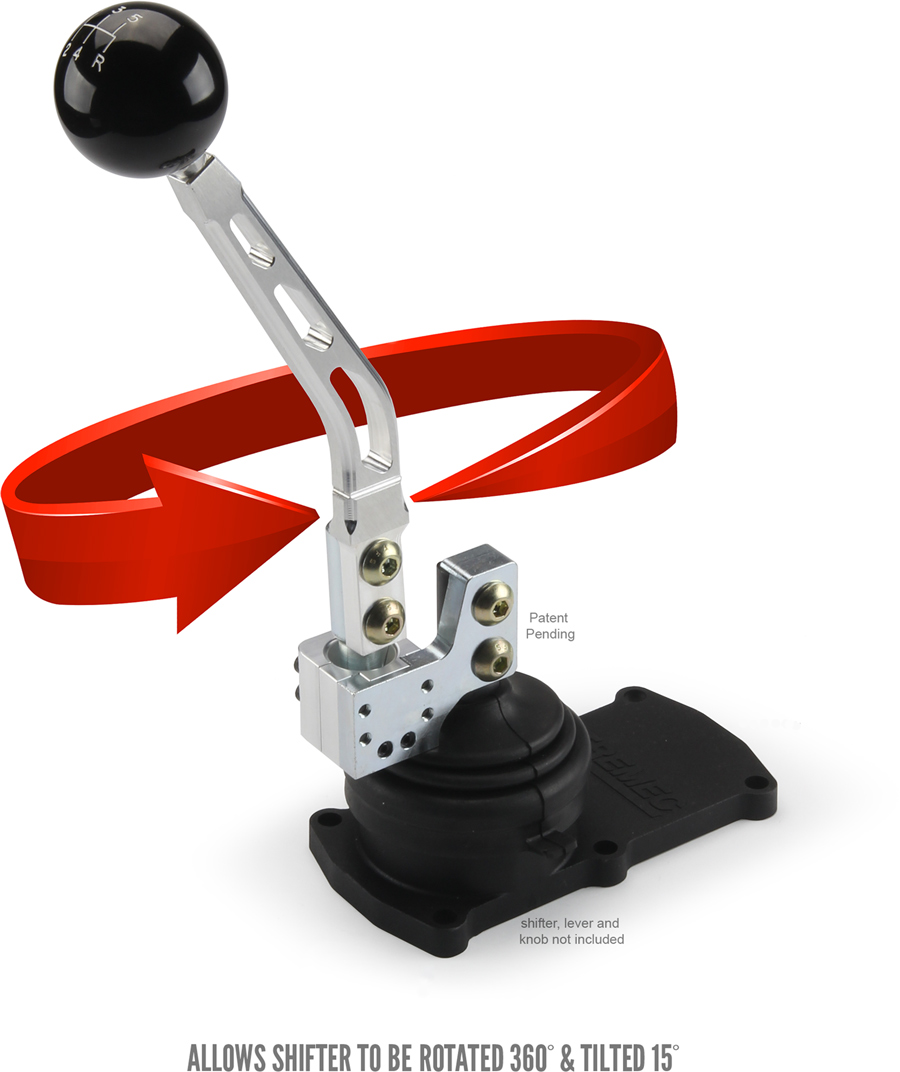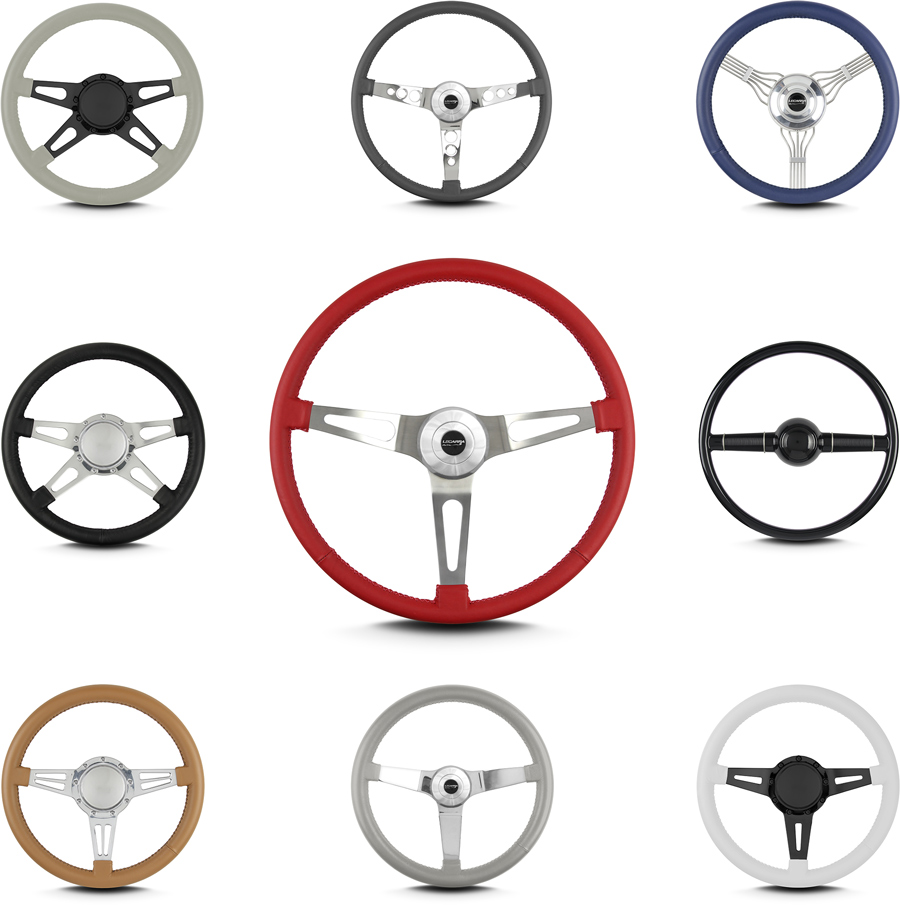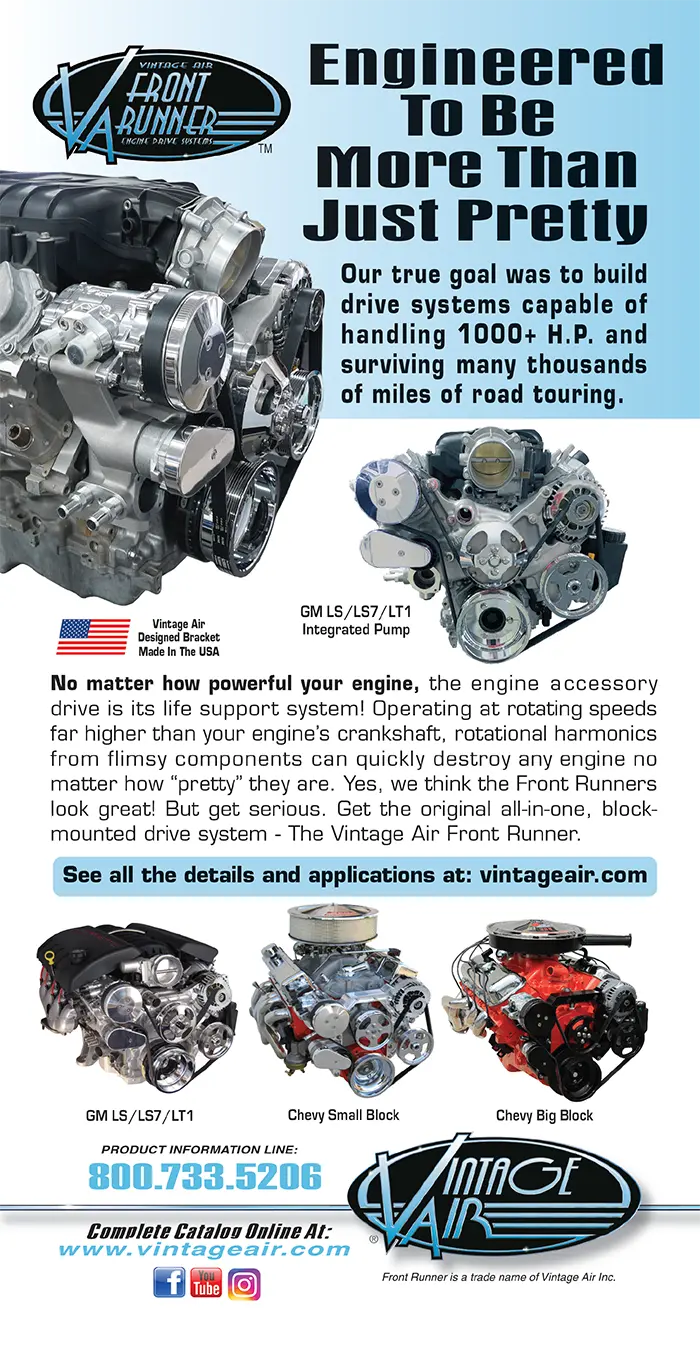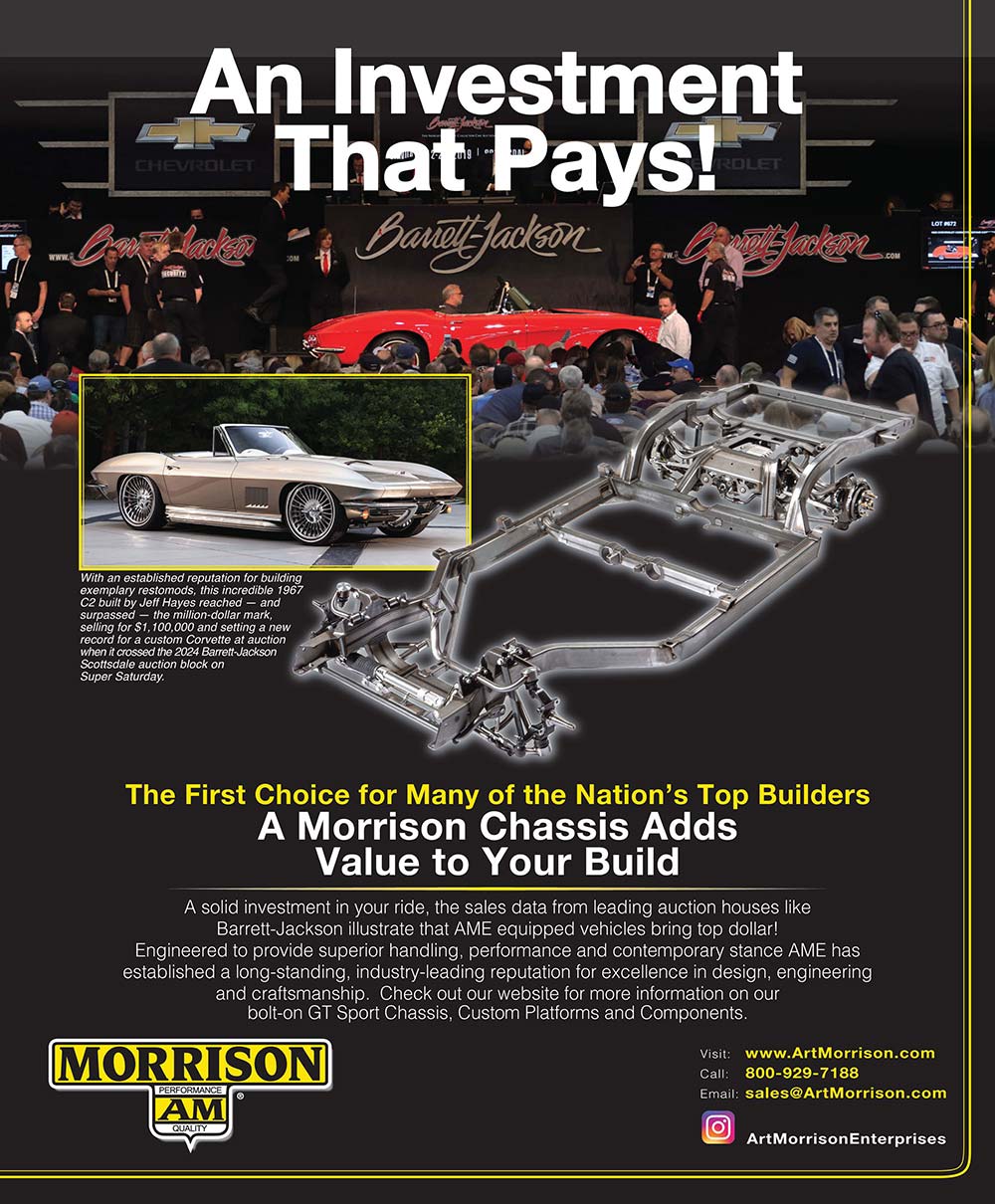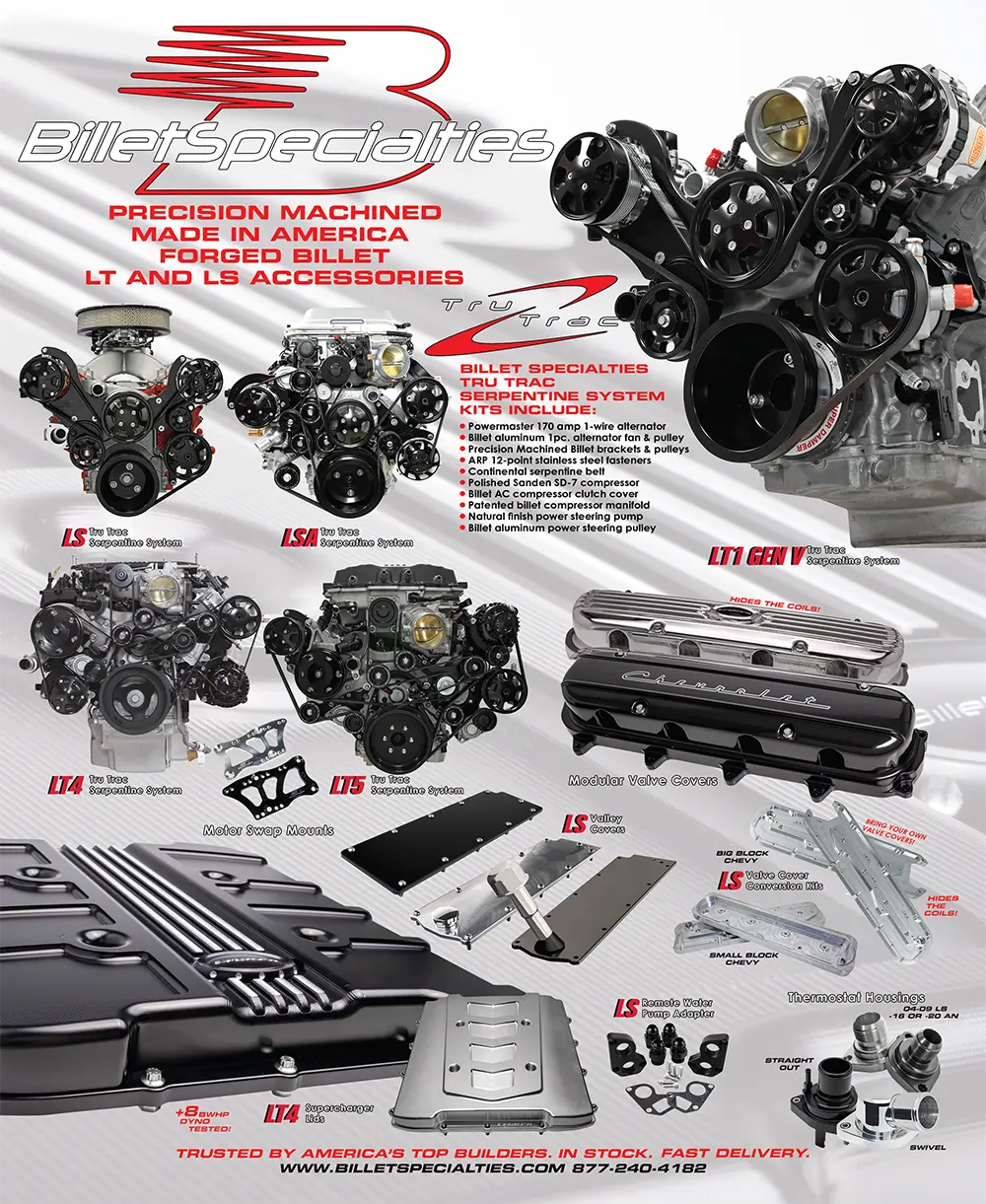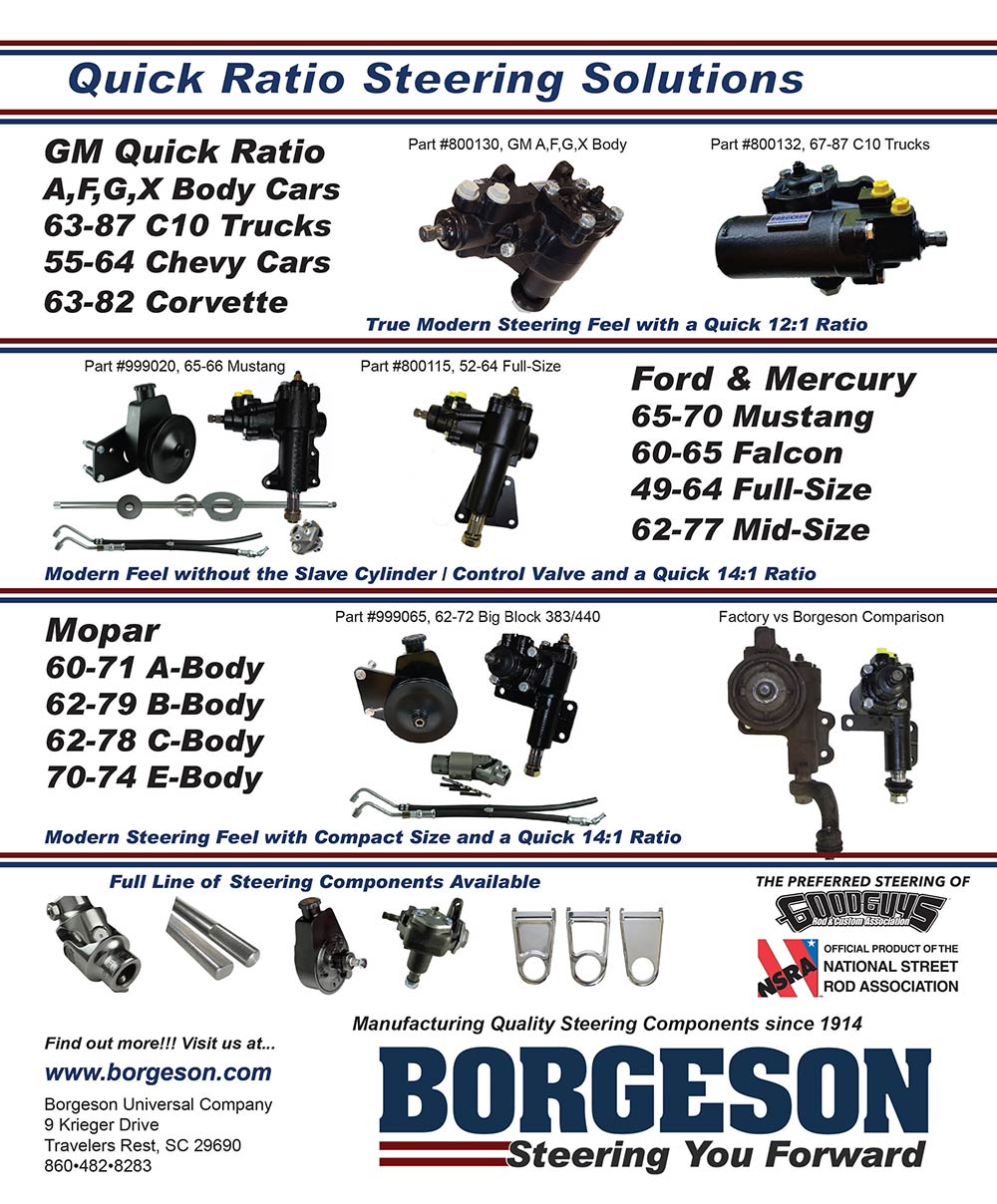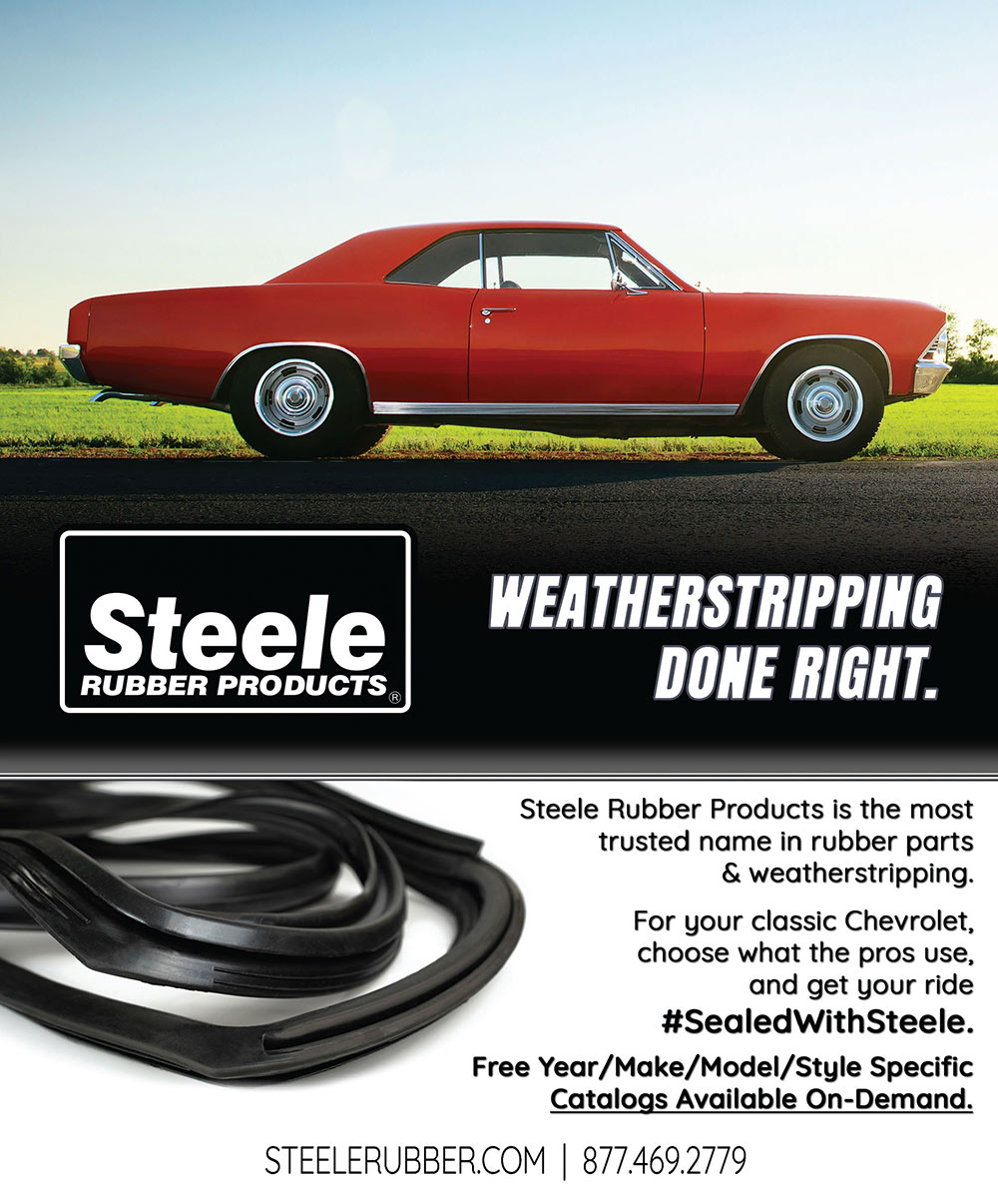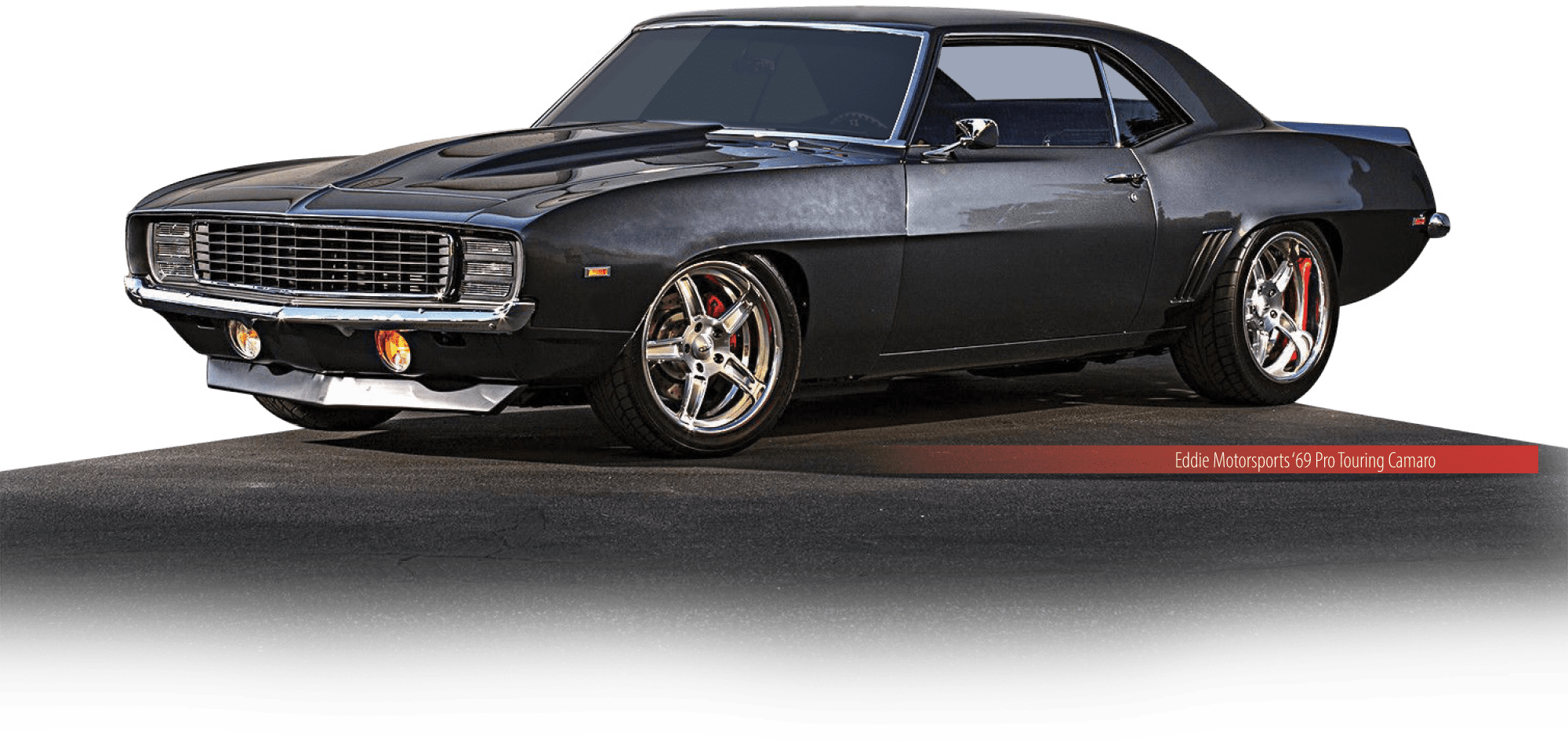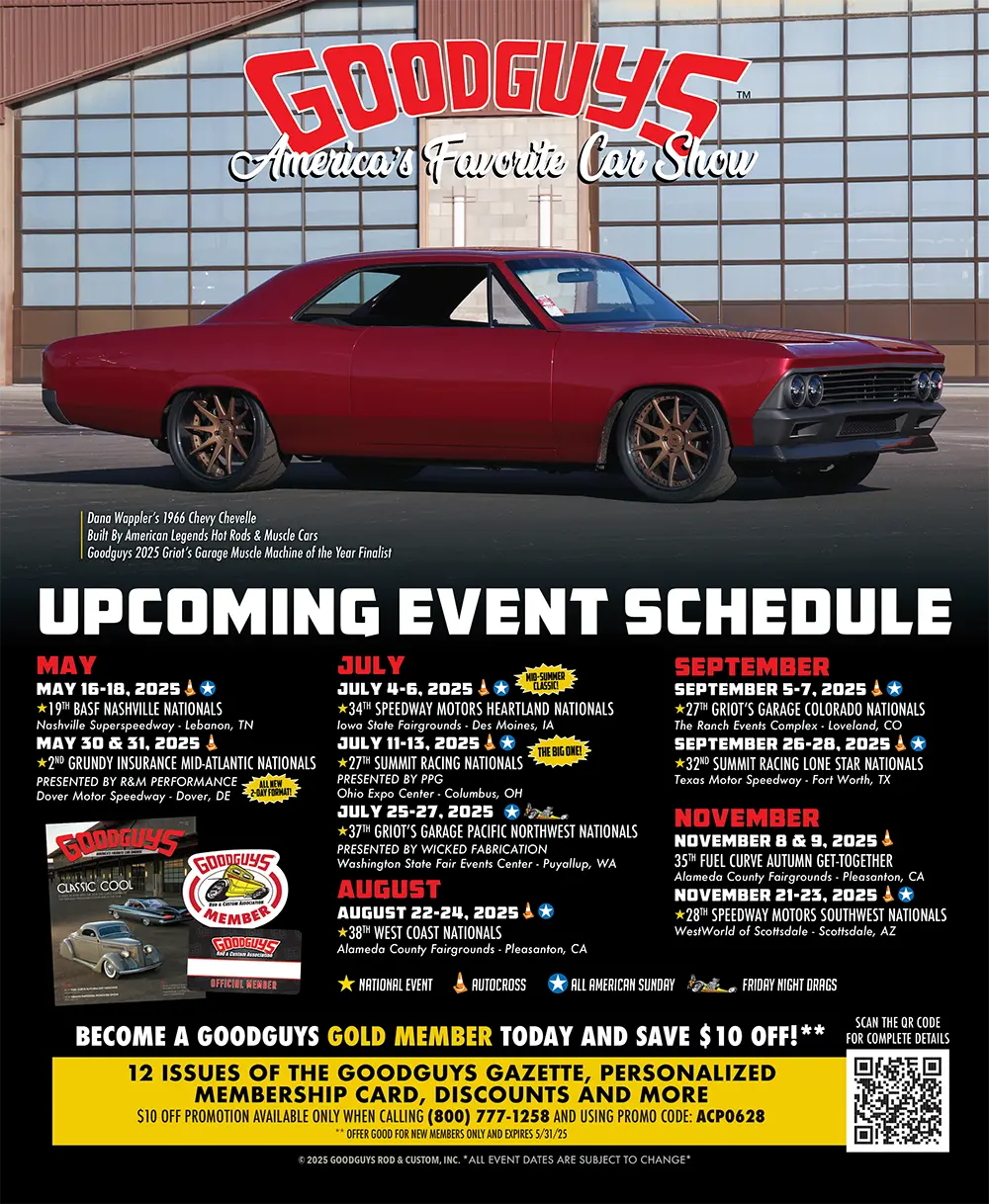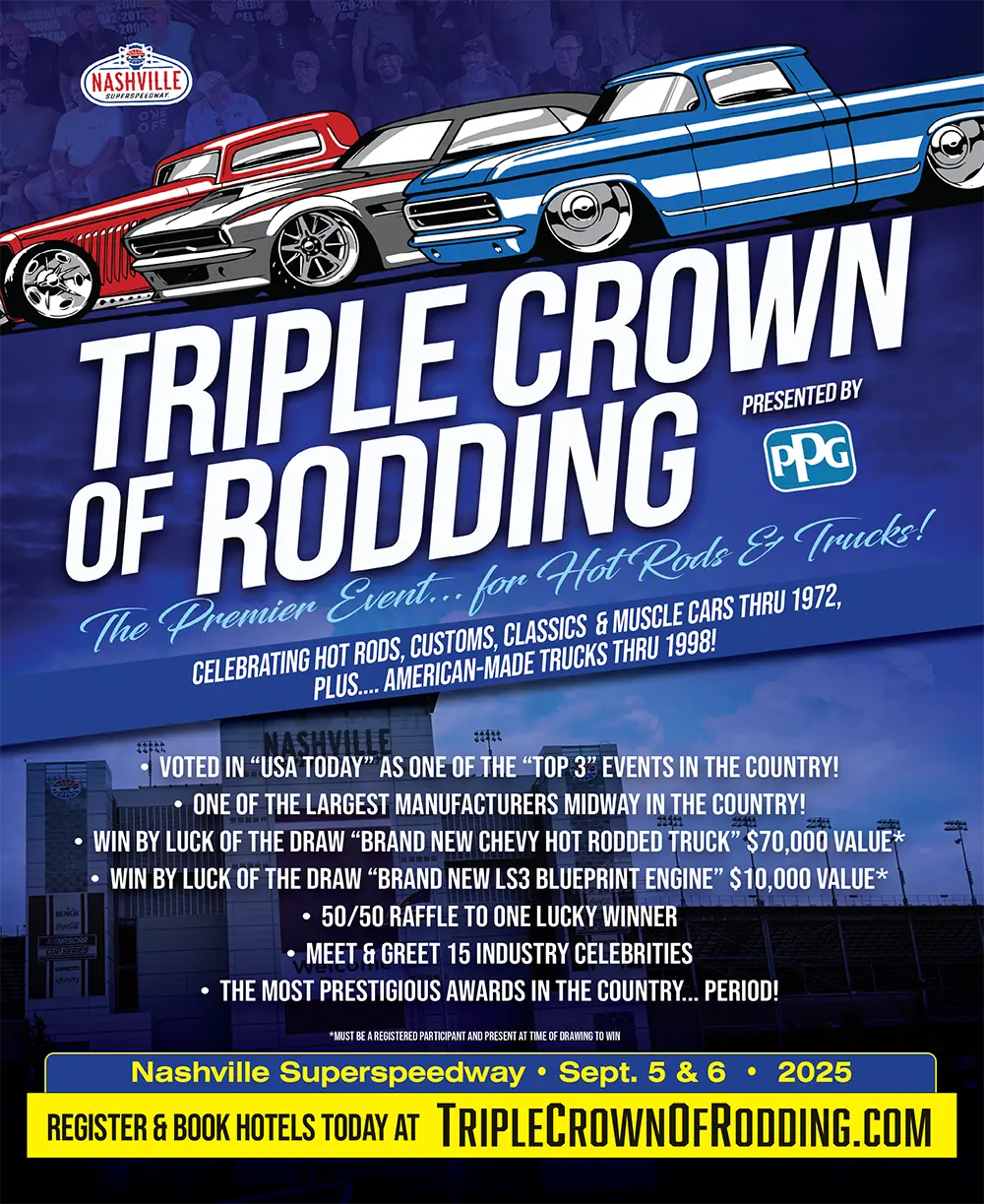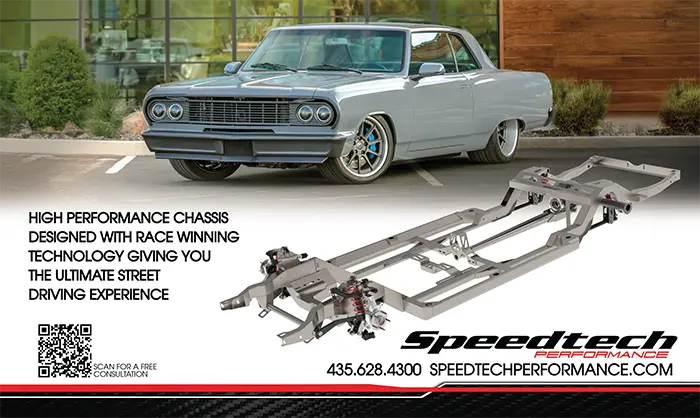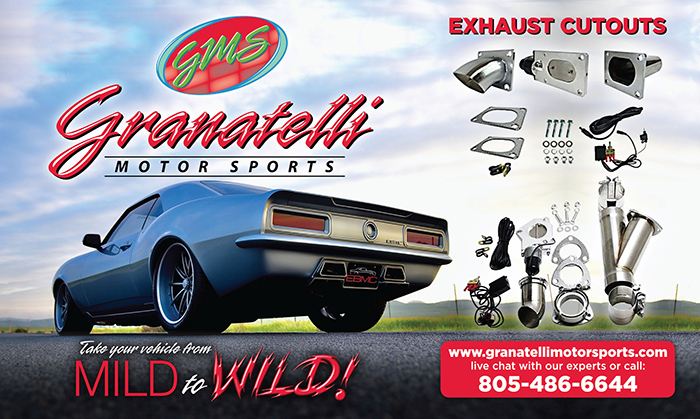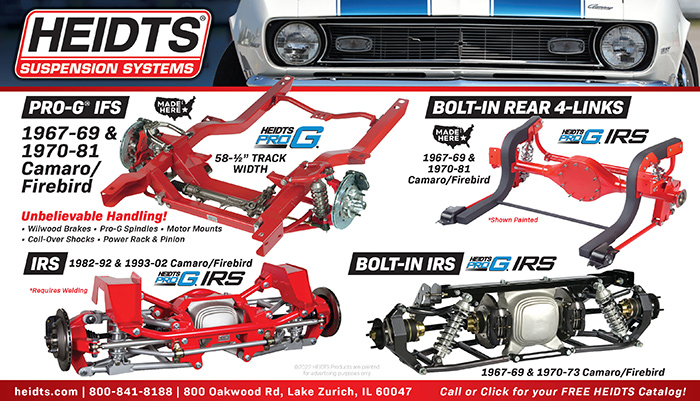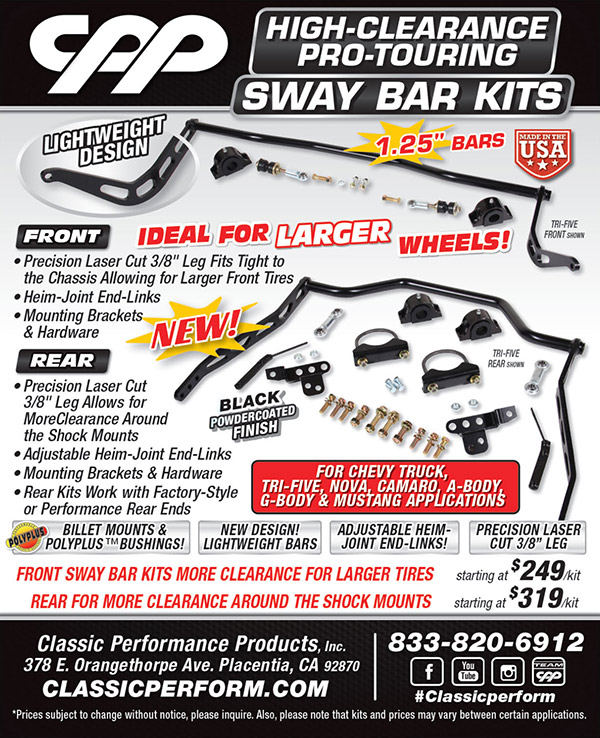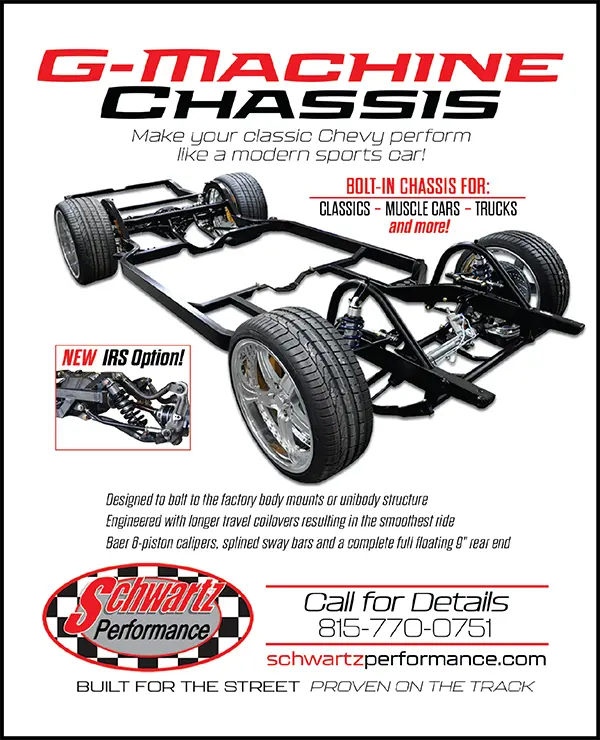 TOC
TOC
Image by NotStock Photography

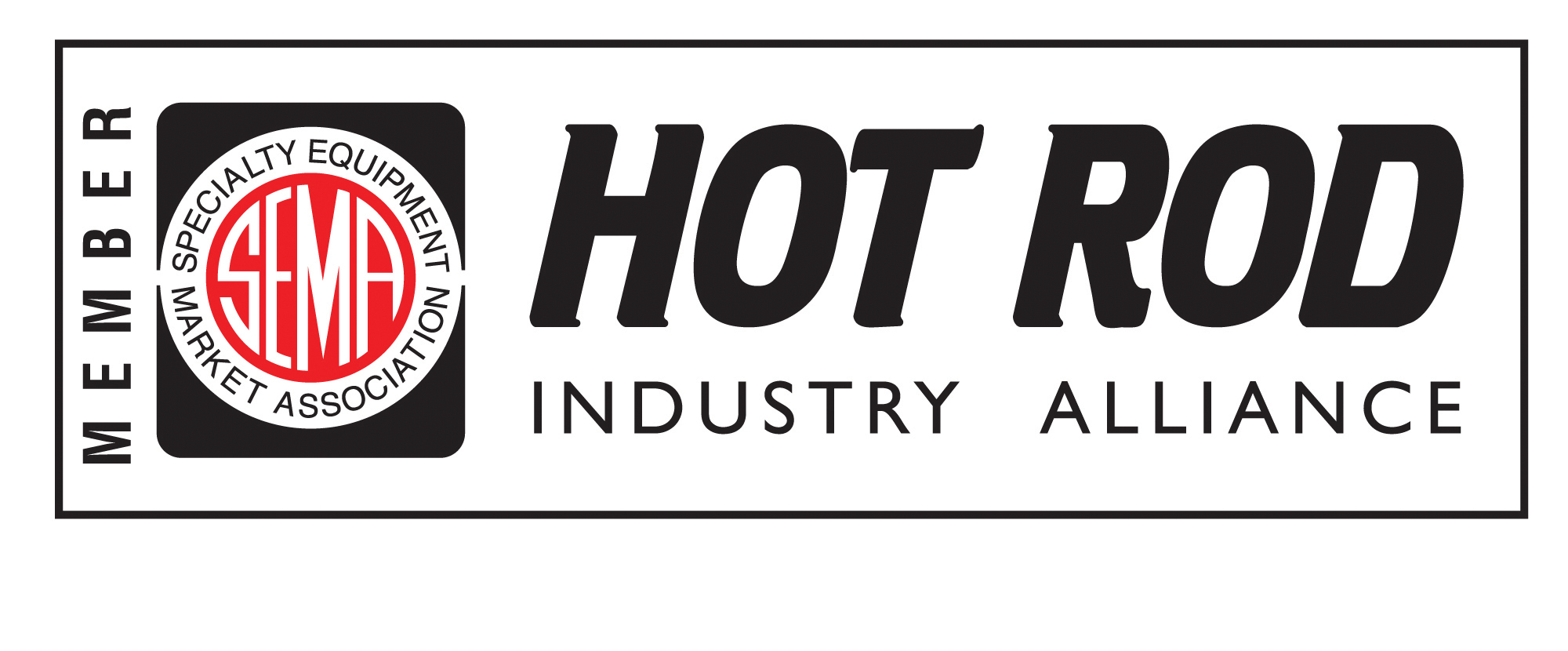


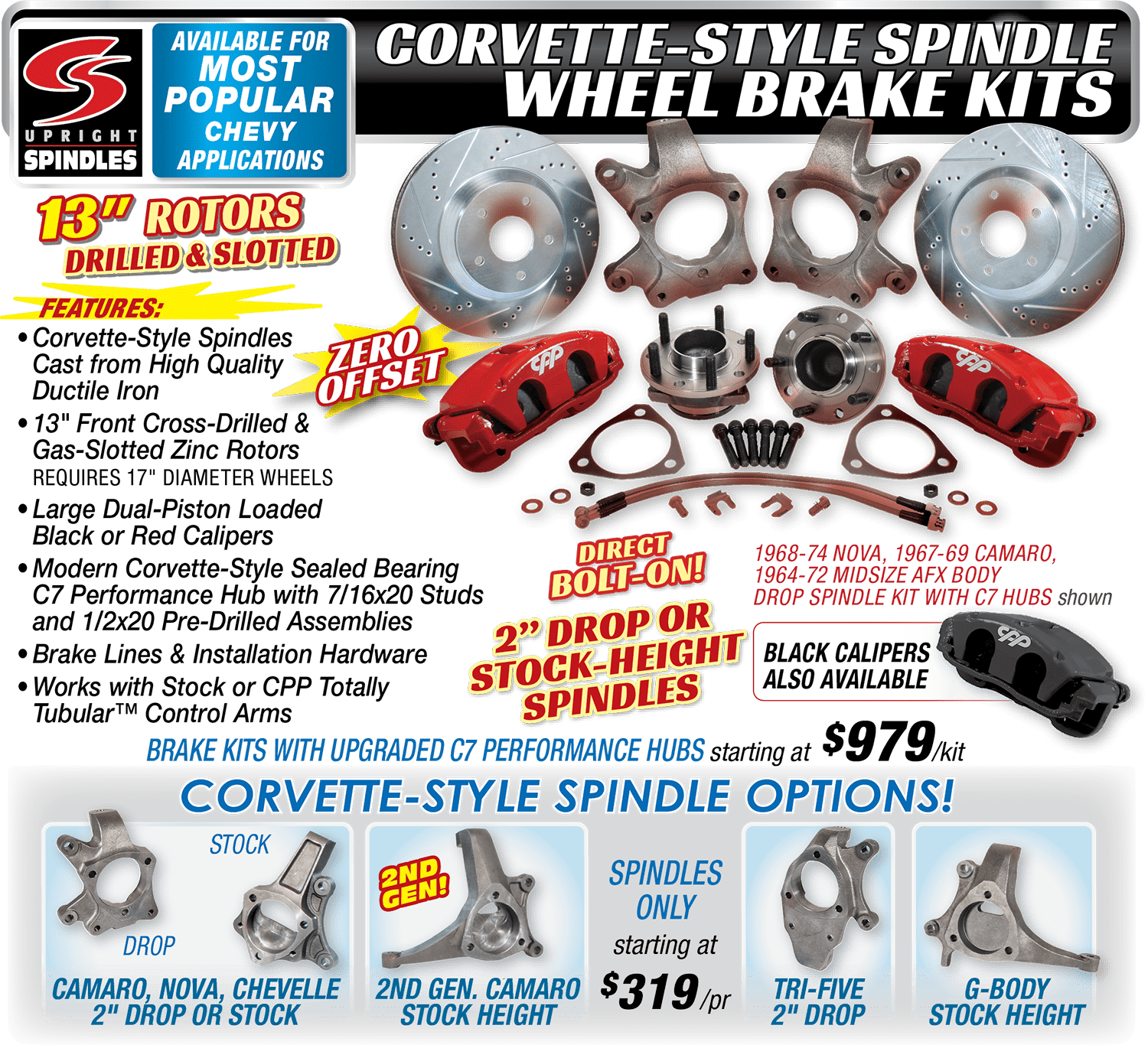
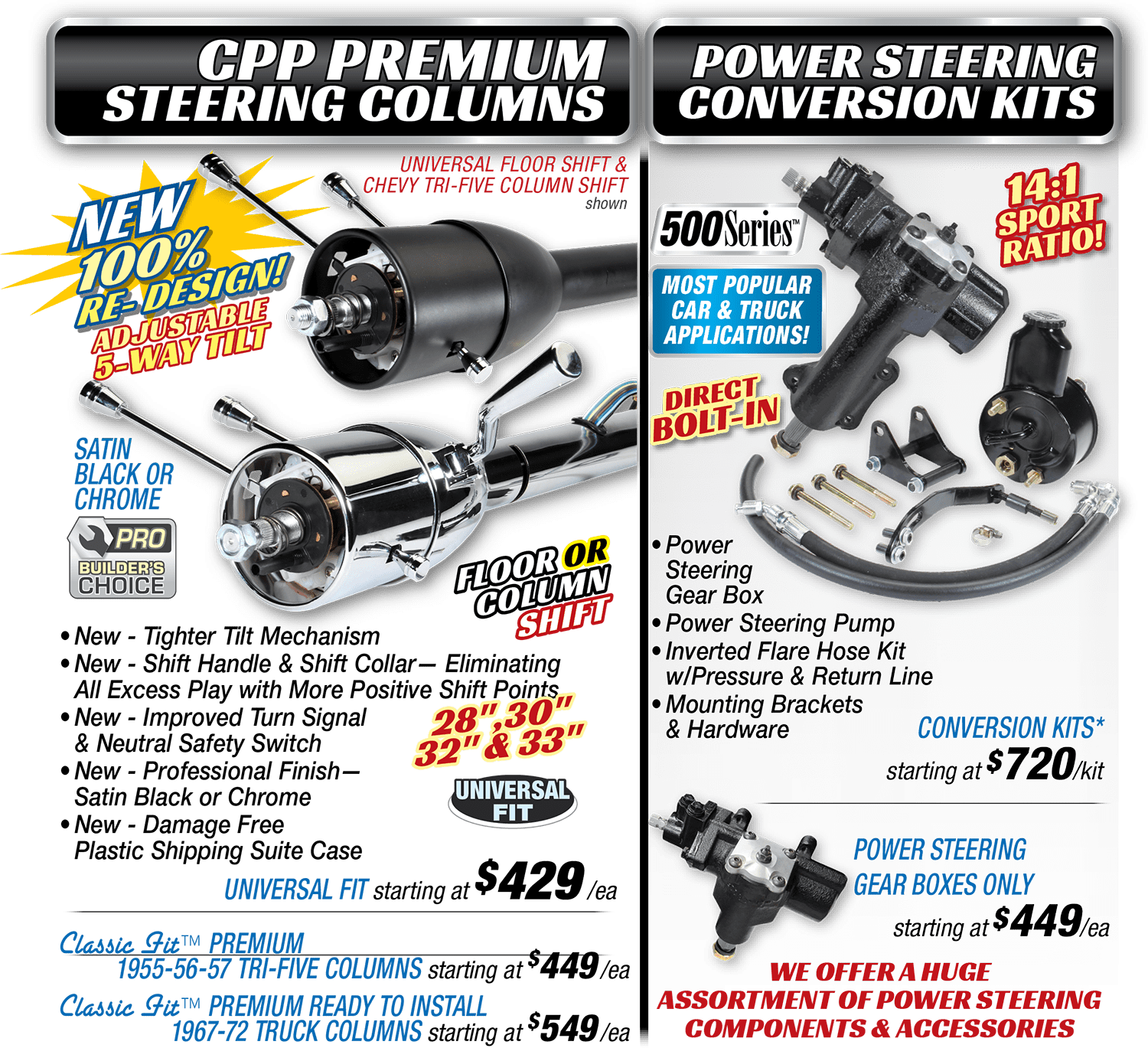
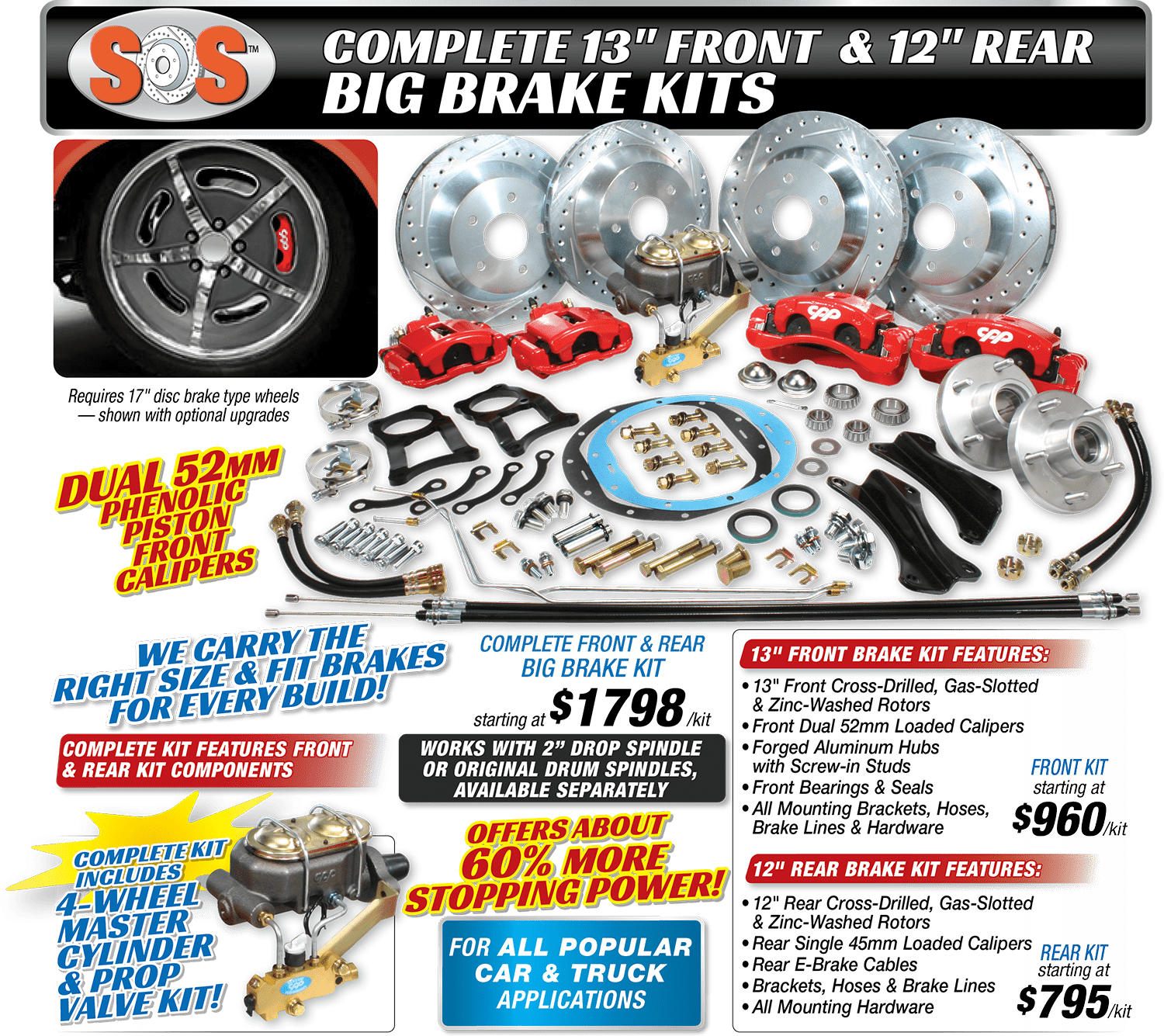
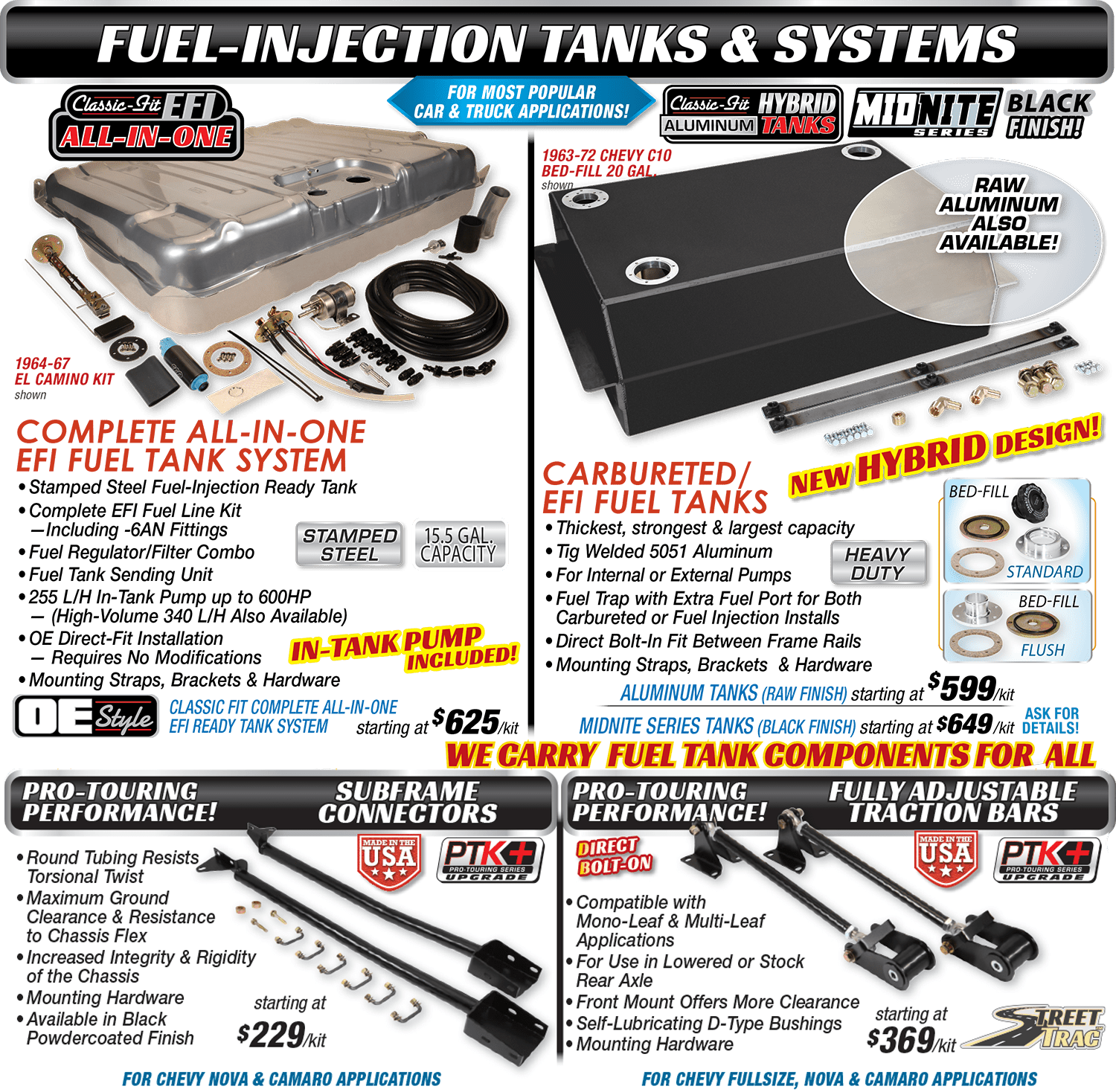

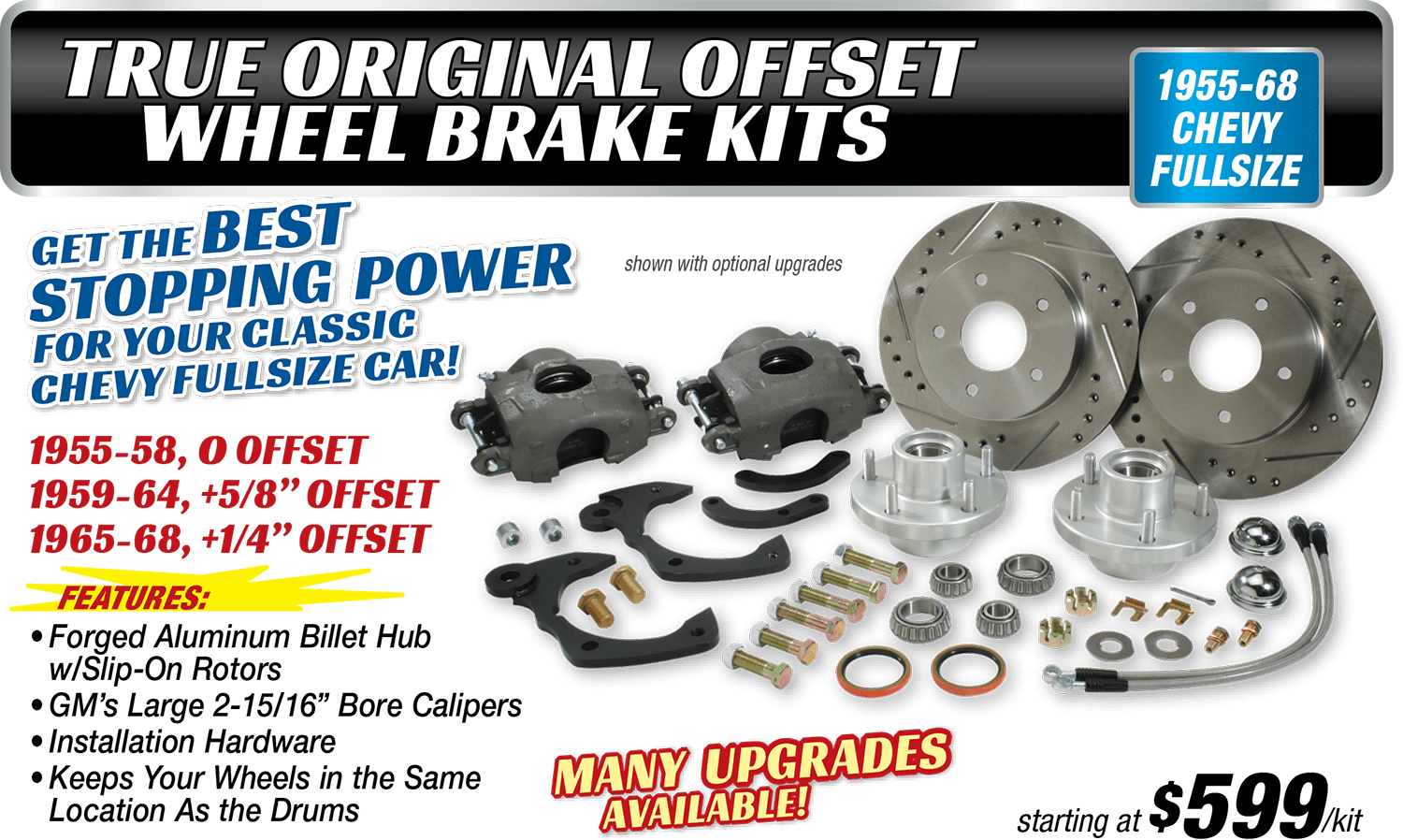


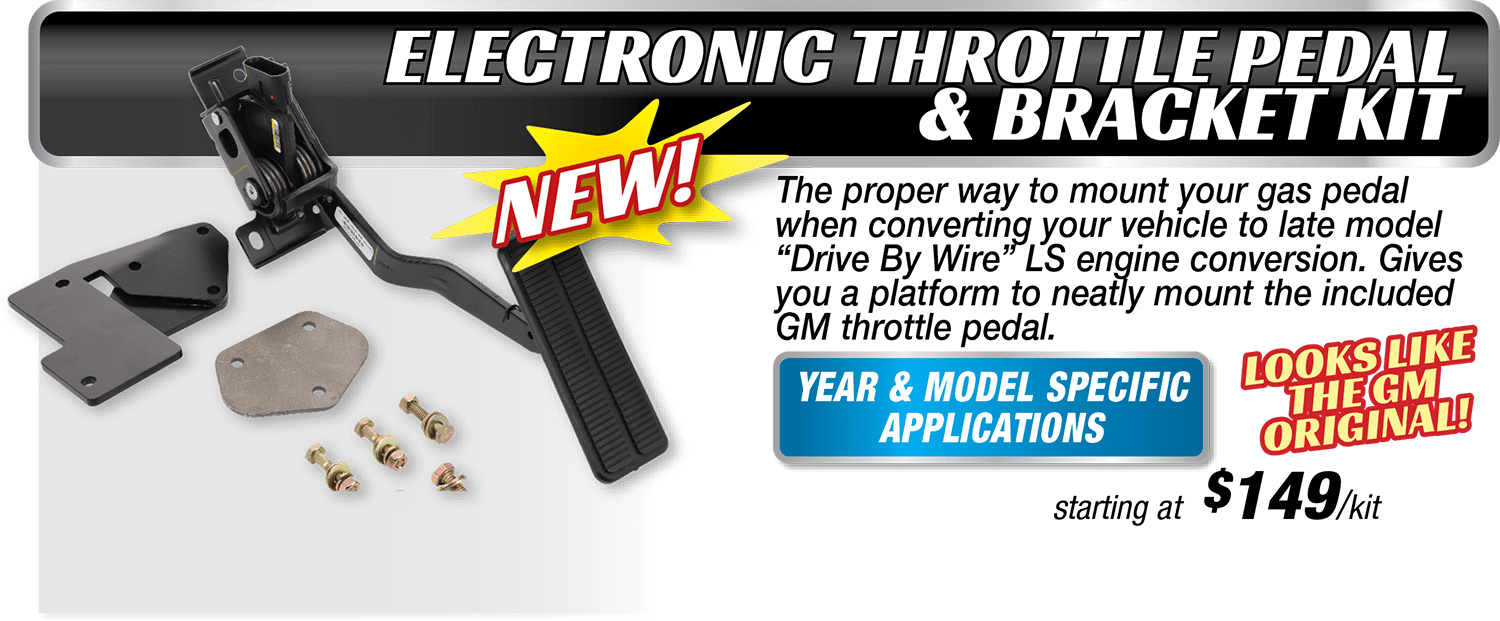
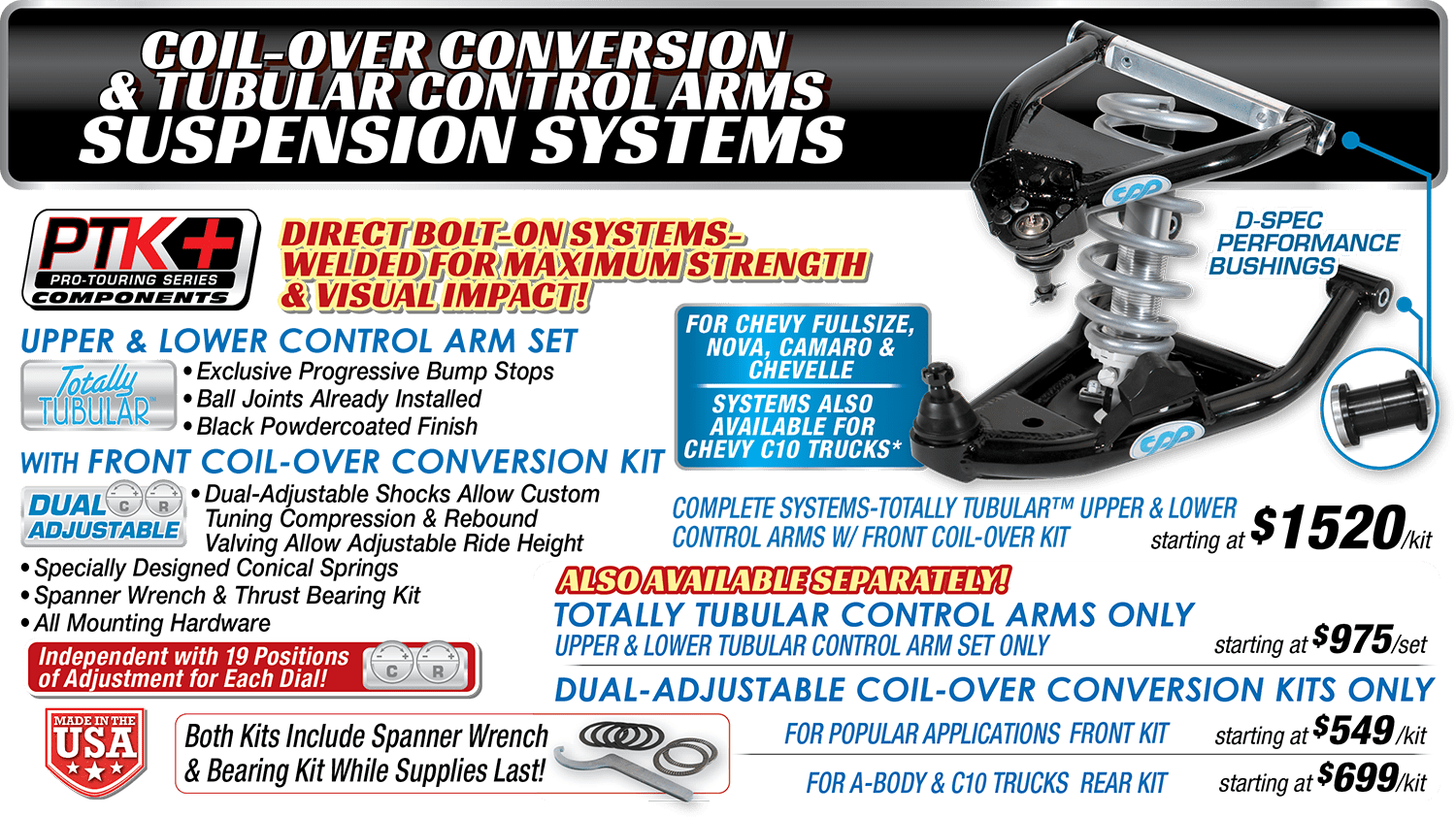

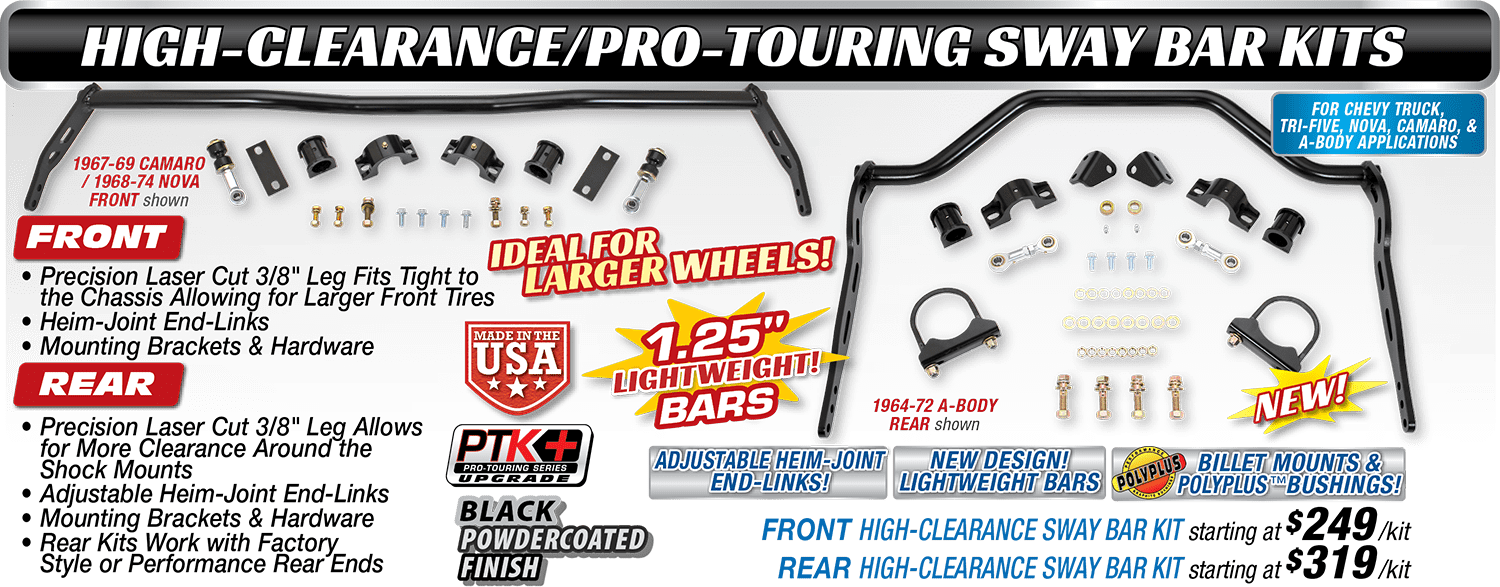

Wes Allison, “Rotten” Rodney Bauman, Shawn Brereton, Tommy Lee Byrd, Ron Ceridono, Grant Cox, John Gilbert, Tavis Highlander, Jeff Huneycutt, Barry Kluczyk, Scotty Lachenauer, Jason Lubken, John Machaqueiro, Ryan Manson, Jason Matthew, Josh Mishler, NotStock Photography, Todd Ryden, Jason Scudellari, Jeff Smith, Tim Sutton, Wes Taylor, and Chuck Vranas – Writers and Photographers
Travis Weeks Advertising Sales Manager
Mark Dewey National Sales Manager
Patrick Walsh Sales Representative
ads@inthegaragemedia.com
AllChevyPerformance.com
ClassicTruckPerformance.com
ModernRodding.com
InTheGarageMedia.com
inthegaragemedia.com “Online Store”
For bulk back issues of 10 copies or more, contact store@inthegaragemedia.com
info@inthegaragemedia.com
Editorial contributions are welcomed but editors recommend that contributors query first. Contribution inquiries should first be emailed to info@inthegaragemedia.com. Do not mail via USPS as we assume no responsibility for loss or damage thereto. IN THE GARAGE MEDIA, INC. reserves the right to use material at its discretion, and we reserve the right to edit material to meet our requirements. Upon publication, payment will be made at our current rate, and that said, payment will cover author’s and contributor’s rights of the contribution. Contributors’ act of emailing contribution shall constitute and express warranty that material is original and no infringement on the rights of others.

Copyright (c) 2025 IN THE GARAGE MEDIA, INC.
PRINTED IN U.S.A.

 firing up
firing up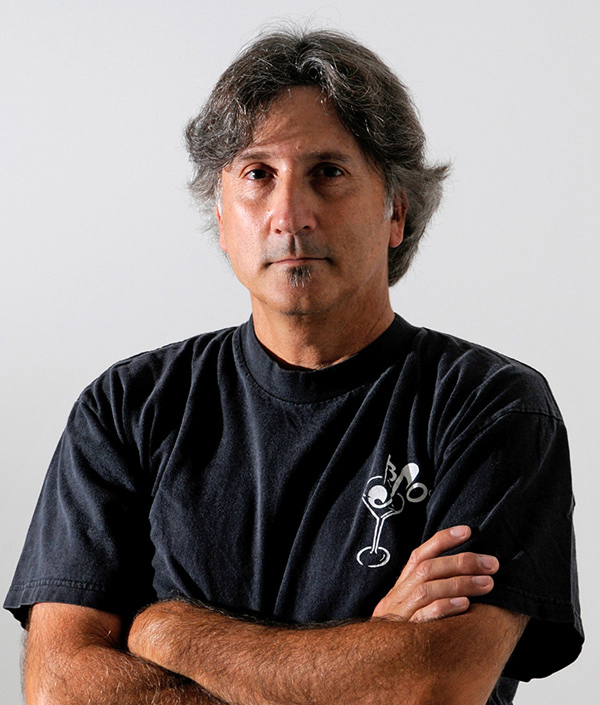
 BY NICK LICATA
BY NICK LICATA

n a world where we get our information from what seems like a bazillion sources, there is no shortage of podcasts as one of those sources. Last check there were 2 million global podcasts, with roughly 850,000 to 1 million based or produced in the United States. Needless to say, the U.S. is the largest podcast market, both in terms of content creation and listenership. Some start out hot then gradually fade away, but those who create a unique podcast with a subject matter for a wide audience can survive and become a lucrative business.
The most popular genre is true crime, with comedy, news, society and culture, business, and health and wellness following closely behind.Podcasts are one of the fastest-growing and most influential sources when it comes to a deep dive into entertainment, education, and niche topics, but when it comes to daily information, websites and online news are the most popular. So, where does that leave automotive-related podcasts? According to a few online searches, there are over 4,000 podcasts geared toward the automotive industry. With that said, they cover a broad spectrum of topics, including car reviews, industry news, maintenance tips, and discussions about automotive culture. Another company I worked for used to tell us how our readership “consumes” information. I thought that term was funny, as it’s likely the only things our readers consume are pizza, burgers, and some form of adult beverages. You gotta love it when the corporate suites come in and attempt to school us about the behaviors of our readership.
 PARTS BIN
PARTS BIN
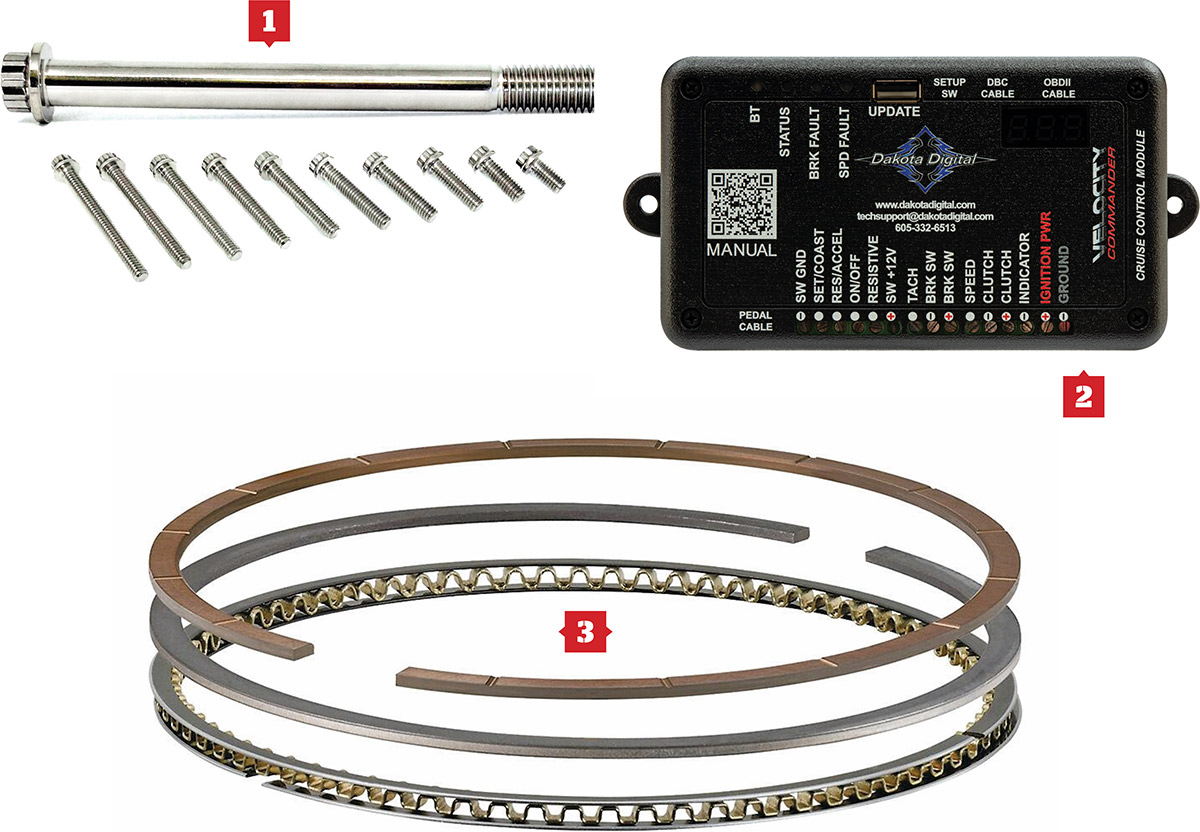


 CHEVY CONCEPTS
CHEVY CONCEPTSInTheGarageMedia.com

 Text & Rendering by Tavis Highlander
Text & Rendering by Tavis Highlander
his Tri-Five is currently under the knife at SaltWorks Fab in Sarasota, Florida. It arrived at the shop as a well-crafted, finished car. Plans were drawn up to maintain the exterior, but to customize the underhood and interior to the new owner’s liking. That underhood area is getting a complete refresh centered around a vintage-appearing LS with Lokar’s Rochester injection intake system. The backdated powerplant will be surrounded by new sheetmetal with a vintage vibe.
Moving to the interior you can see mildly bolstered seats with a nod to factory GM styling. The dash takes the double-hump setup from the factory while adding more layering and detailing. Individual brows will shade the custom gauge cluster and passenger-side bezel. A bright blue accent has been chosen to add life to the mainly black interior. Custom-machined door trim brings some exterior trim styling elements inside as well.
 FEATURE
FEATURE
 Images by NotStock Photography
Images by NotStock Photographyravis Alford has pretty much always been a Camaro guy. Being his first car was a 1980 version, that pretty much planted the second-gen seed. But the ’80s Camaros’ performance left a lot to be desired. During that time emissions standards had reduced engine power, choaking the 350 engines to just about 190 hp—and that was on a good day. By 1980 the Camaro had also gained weight compared to the early second-gens (1970-73). Add in vague steering and poor braking performance, coupled with the aforementioned reduction in power, and late second-gens were basically slugs—not bad-looking slugs, but slugs none the less.
Years later, Travis wanted to revisit the Camaro world, but this time it had to be a 1970-73 model. “My buddy, Brian Vastine found a clean, one-owner ’70 Camaro in California, and since my wife has family in the area, we packed up and loaded my two daughters in the car and made the trip from Texas to California for a family visit and to pick up the car. It was great to see some family we don’t get to visit that often, but coming home with my dream car made it even better,” Travis says.
 TECH
TECH
 Images BY THE AUTHOR
Images BY THE AUTHOR
 Images BY THE AUTHOR
Images BY THE AUTHORfew months ago we offered a look into spotting and identifying the GM LS Gen III and IV 4.8L and 5.3L LS engines. Now that you know what to look for, we can offer suggestions on how to pump up the power with these engines. Common sense might dictate that all that’s necessary is to just follow the footsteps of classic small-block Chevy builds, and in a general sense that would be correct.
But the Gen III/IV LS engines enjoy far superior flowing cylinder heads compared to the Gen I small-block. Even the most pedestrian cathedral port heads for the 5.3L LM7 engine flows better and enjoys far better combustion efficiency than the best production Gen I head. While stock 5.3L (325ci) truck engines are only rated at 300 hp, the modern factory correction factors are very conservative compared to the normal aftermarket dyno test procedures.
 FEATURE
FEATURE
Monica Tholey Lucas’ 1969 Nova
 Images by THE AUTHOR
Images by THE AUTHORonica Tholey Lucas wasn’t like all the other girls growing up in Abington Township, Pennsylvania. While her schoolmates at St. Basil’s all-girls school were into boy bands and doing girly things, Monica spent her days reading car magazines and gathering a cranium full of Chevy muscle car knowledge on yenko.net, a website dedicated to high-powered Chevys and the ilk. It was there she chatted with her fellow muscle car enthusiasts and set the stage for her first big muscle car build.

 TECH
TECH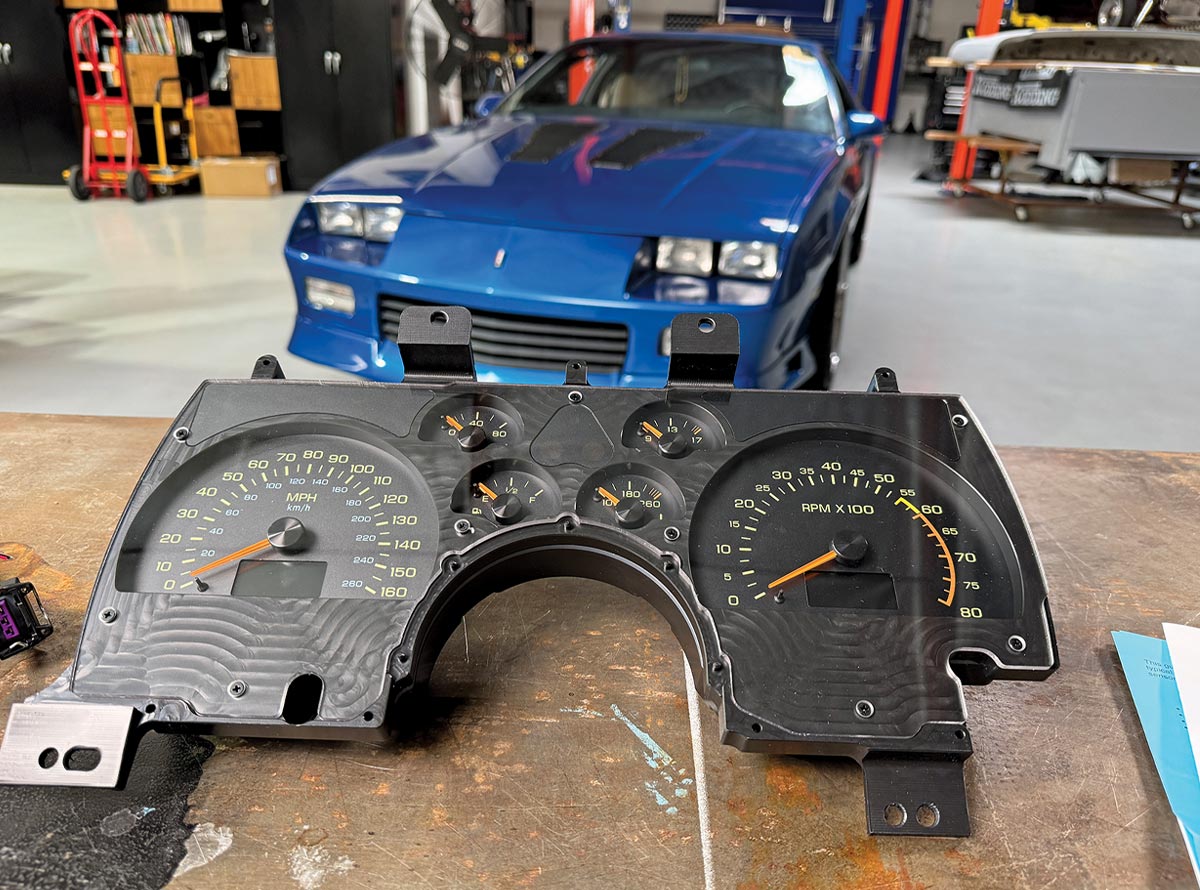
 Images by Ryan Foss
Images by Ryan Fosshen our buddy Ryan Foss first purchased his 1992 Chevy Camaro, affectionately known as “Copmaro” due to its past life as a high-speed pursuit vehicle busting moonshiners, speeders, and truck drivers hauling Coors outta Texarkana, Texas, it became apparent that there was more to be desired from the instrument panel. While it displayed most of the information that most of us would require, it didn’t present it accurately. The tach and speedo were off and one of the auxiliary gauges wasn’t functioning whatsoever. A new cluster was in order, so a call to our buddies at Dakota Digital was made. Turns out, they had just released a new cluster for the 1990-92 Camaros as part of their trick RTX line.
Designed with the OE cluster in mind, Dakota Digital’s RTX line blends classic form with modern function by utilizing a single control box to process all the information received from a handful of sensors and sending units, transferring said information to the RTX gauge cluster via a single communication cable. Fully programmable with a myriad of color combinations and additional information presented on the TFT message centers, the RTX gauge cluster fits the classic lines of Ryan’s Camaro, until the key is turned and the LED backlighting illuminates the modern cluster.
 FEATURE
FEATURE
 Images by NotStock Photography
Images by NotStock Photographyreak out those acid-washed jeans and a few cans of aerosol Aqua Net because the ’80s are back and looking better than ever!
Yeah, we know most muscle car fans revere the cars of the 1960s and 1970s, and with good reason. But there are thousands of GenX hot rodders who came of age in the 1980s and 1990s who have equally fond memories of cars and trucks from the Bon Jovi era. Whether it’s IROC Camaros, C4 Corvettes, or Monte Carlo Super Sports like this white-hot example, there are many ’80s automotive platforms that marked a return to factory-built performance—or at least performance potential. Right now, we’re seeing more and more examples of ’80s and ’90s rides being built into legit performance machines.

 TECH
TECH

 Images by THE AUTHOR
Images by THE AUTHORlumbing all the different fluid systems in a custom vehicle can be a daunting task. Determining the proper hose for the respectful fluids they’ll be responsible for, and the size for that matter, can be a confusing task for the uninitiated and experienced alike. Add in factors like the various sealing methods, tapers, fittings, thread count, and so on, and it can get overwhelming very quickly. Thankfully, if we don’t mix and match improper fittings and materials, it can be broken down fairly simply.
When it comes to the brake system of a classic Chevy there are a couple options for the hard lines as well as the hoses. One common hard line material that has recently gained popularity is a combination of mild steel and some sort of anticorrosive alloy like nickel or copper, commonly referred to as NiCopp. Easier to bend and form than steel tubing, it has the strength and structural integrity of steel lines, with the added benefit of being much more corrosion resistant. In addition to the brake system, NiCopp is also popularly used in transmission and fuel lines.
 FEATURE
FEATURE

 Images by THE AUTHOR
Images by THE AUTHORld drag cars always have a story to tell, but significant history is often covered up with a new paintjob or updated parts, losing special artifacts along the way. Because race cars are often a one-of-a-kind combination of parts, the simplest of changes can greatly alter a car’s pedigree. Occasionally, a car comes along that’s truly a time capsule that takes you back to another era. This is one of those cars.
This is a 1963 Corvette Sting Ray, owned by Tom Clary of Alton, Missouri. Tom is no stranger to significant cars, as he’s been collecting Yenkos and old race cars for years. He is one of the partners of the Supercar Reunion event, a gathering of COPO, Yenko, Baldwin Motion, and many other rare muscle cars each summer in Bowling Green, Kentucky. That’s where we caught up with Tom and photographed his incredible Corvette drag car. Tom had a lot to say about the car’s history, as he had uncovered the full timeline of the car’s career on the dragstrip since purchasing it a few years ago. Not only did he document the car, but he carefully updated it so it could still make exhibition passes. It’s an outstanding piece of drag racing history, even though it was only raced for about six years before being retired and preserved for decades after. Despite its short-lived racing career, the car passed through several hands, including those of the legendary John Lingenfelter. Let’s dig into the history.
 TECH
TECH

 Images BY THE AUTHOR
Images BY THE AUTHORegardless which style of hopped-up V-8 you’re packing underhood, the most important part of linking it all to the street lies in your controls. Once you’ve hit the starter, it’s all business in trying to channel every bit of that hard-earned horsepower once the wheels are turning. Sure, bone-stock parts always do their job but in the world of performance technology, there’s always a better way to raise the bar to the next level. When addressing the heartbeat of your classic Chevy, upgrading your steering, shifting, and pedals just makes great sense, seeing they’ll get quite a workout from street to strip and everywhere in between.
The 1971 Camaro laid out across our pages has become a familiar sight to regular readers of All Chevy Performance over the years. It’s been transformed from that of a bare shell with us covering all facets of the build, from suspension and brakes to its LS driveline, cooling, exhaust, sheetmetal, wiring, and even insulation. With all of the modifications fused into its resurrection, it was a perfect time to look deep into the business office to see the best way to upgrade its control systems with products from industry-leading manufacturers. Having a wicked 5.3L LC9 LS V-8 now residing between the framerails linked to a T56 six-speed manual transmission, it’s time to get the car ready for action.
 EVENT
EVENT

 Images by The Author
Images by The Authorf you still have your airbrushed T-shirt, neon sunglasses, and cut-off shorts, then you probably remember the ’80s and ’90s very well. Tourist towns like Daytona Beach have been a hot spot for car shows for decades, and one of the biggest is the Daytona Turkey Run, an event that is held twice a year, one in the Spring and one in the Fall. While the Fall event, which is held on Thanksgiving weekend, tends to get the most recognition, the Spring event has a lot to offer as well.
Held at the Daytona International Speedway, the Spring Turkey Run is too much to see in one day on foot. The event is held in the infield of the giant speedway and features a car show, parts vendors, an enormous swap meet, historic race car displays, and much more. There is also a huge car corral, where hundreds of cars are up for grabs for the right price. Dozens of food vendors line every possible walkway, ensuring you won’t go hungry or thirsty. The layout of the event requires a lot of walking, but it’s worth every step. If you didn’t get enough during the day, there is a free cruise-in each night called Turkey Run Nites held right outside the speedway with music, food vendors, and a great turnout of cars under the lights.
Advertiser
- American Autowire33
- American Camaro Association85
- Art Morrison Enterprises11
- Auto Metal Direct9
- Automotive Racing Products7
- Billet Specialties23
- Boese Engineering89
- Borgeson Universal Co.27
- Classic Industries31
- Classic Performance Products4-5, 85, 92
- Custom Autosound63
- Dakota Digital91
- Eddie Motorsports39
- FiTech EFI65
- Flaming River Industries45
- Forgeline Motorsports65
- Goodguys Rod & Custom Association47
- Granatelli Motor Sports, Inc.75
- Heidts Suspension Systems79
- Hemmings59
- Lokar2
- National Street Rod Association61
- Powermaster Performance79
- Schwartz Performance85
- Scott’s Hotrods75
- Speedtech Performance USA63
- Steele Rubber Products29
- Summit Racing Equipment13
- That’s Great News89
- Triple Crown of Rodding, LLC49
- Vintage Air6
- Wilwood Engineering43
 EVENT
EVENT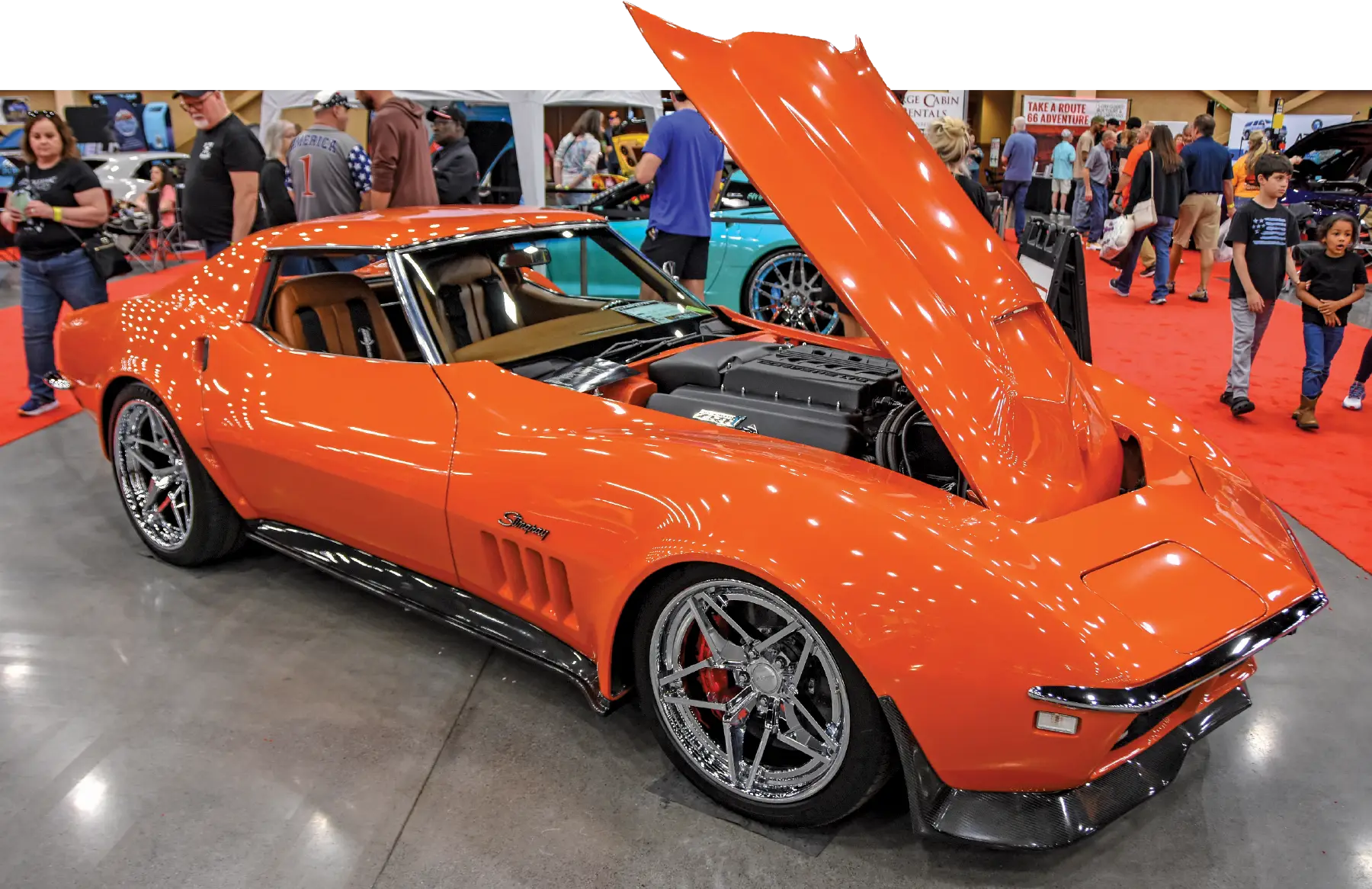

 Images by The Author
Images by The Authorast Tennessee is known for moonshine and fast cars, and the tourist town of Pigeon Forge is covered with amazing car events from March until September. The kick-off to the car show season is always the Corvette Expo, as it takes place in mid March. This event is celebrating its 48th year, and it was once strictly Corvette-based. Now incorporating all Chevrolet makes and models, the Chevys in the Smokies portion of the event has given the show a breath of fresh air. The event features an indoor and outdoor car show, a swap meet, lots of great vendors, and Corvette cruise opportunities on the famous Tail of the Dragon.
We were blown away with the turnout of cars at the LeConte Center in Pigeon Forge. The convention center was packed with high-end restorations, amazing survivors, and dozens of cars with outstanding history. Some notable cars included a pair of 1965 Chevelle Z16s, one restored and one unrestored. Then, there was an unrestored ’69 COPO Camaro that has been a drag car its entire life, as well as a documented L79-powered 1965 Chevelle with COPO heritage. The most significant COPO in attendance was a ’65 Chevelle 300 two-door sedan, a one-off car that was ordered with a 396/425hp big-block, M22 four-speed, and 4.88:1 gears. Additionally, a Yenko Stinger Corvair and many other great cars gave us plenty to admire during the three-day event.








